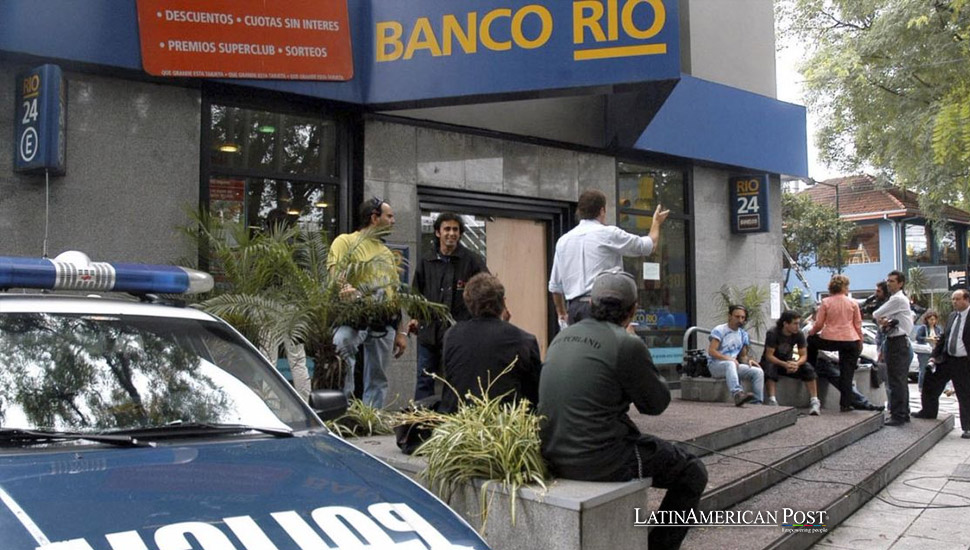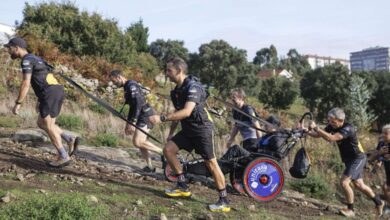Remembering How Argentina’s Robbers Almost Pulled Off The Greatest Bank Heist

In January 2006, a group of bold thieves in Buenos Aires nearly executed one of the greatest bank heists in history. With meticulous planning, fake hostages, and an elaborate escape plan through the city’s sewers, they stole millions—but in the end, a personal mistake unraveled it all.
A Bold Plan Born Out of Crisis
On a bright January day in 2006, the people of Buenos Aires were treated to what appeared to be a classic bank robbery drama. A group of masked men stormed into the Banco Río in Acassuso, a quiet suburb of the Argentine capital, taking hostages and drawing the full attention of the police, the media, and the public. As the tension escalated, everyone waited with bated breath for the inevitable standoff and eventual capture of the criminals. What no one knew, however, was that the actual heist was happening beneath their feet.
The daring robbery was part of a meticulously crafted two-year plan. And while the spectacle unfolded on the surface, the real genius of the operation lay underground, where millions of dollars in cash and valuables were being quietly looted from the bank’s vault. It was a heist that, had it succeeded in total, could have gone down as one of the greatest in history. But despite the elaborate scheme, the criminals soon discovered that not every detail had gone according to plan.
A Mastermind’s Vision
The plot for the Buenos Aires bank heist was born out of a desire not just for money but for a grand spectacle that would humiliate the banking system. The mastermind behind the heist, Fernando Araujo, was no ordinary criminal. An eccentric man with a passion for crime movies, Araujo had long been fascinated by the idea of pulling off a massive bank robbery. He was known for smoking marijuana while watching heist films, using them as inspiration for the real-life crime he was planning.
Araujo envisioned a robbery that would not only net him and his team millions of dollars but also embarrass the financial institutions that had already lost the trust of the Argentine public. In the early 2000s, Argentina had been plunged into economic chaos, with the value of the local currency plummeting and people losing their savings overnight. However, the contents of safe deposit boxes remained untouched by the financial crisis, making them an attractive target for Araujo and his team.
He planned to break into the Banco Río by tunneling from the city’s sewer system, stealing millions of dollars from the safe deposit boxes, and escaping without a trace. But he knew the real challenge would be keeping the police distracted long enough to complete the heist. And so, he devised an ingenious solution: a staged robbery on the surface that would draw all the attention away from the vault.
The Day of the Heist
On January 13, 2006, after years of planning, the heist team implemented their plan. The crew consisted of six skilled criminals, each with a specific role in the heist. While some members of the team entered the bank through the front doors, armed with fake guns and taking hostages, the rest of the group was already at work underground.
Sebastián García Bolster, known as “the engineer,” had spent months meticulously digging a tunnel from the city’s sewers to the bank’s vault. It was a physically demanding task, requiring precision and patience. On the day of the robbery, Bolster broke through the final barrier, gaining access to the bank’s basement, where the safe deposit boxes were located.
While the police negotiated with the robbers upstairs, Bolster and his crew looted the vault. They had given themselves a strict two-hour time limit, knowing that any longer could raise suspicion. The plan was to load the money and valuables into inflatable rafts, disappear down the tunnel, and escape through the sewer system to a nearby maintenance hole where a getaway vehicle awaits.
As the team upstairs continued to distract the police, the robbers below were busy filling bags with cash, jewelry, and other valuables. The take was expected to be around $20 million, with each member of the team set to walk away with approximately $3.3 million.
The Getaway
The real genius of the heist was not just in the execution but in the getaway. While most bank robberies rely on a quick escape by car, Araujo had planned something far more elaborate. The robbers would escape not through the bank’s front doors but through the underground tunnel, which led to the sewers.
Once the vault had been emptied, the crew slipped back down the tunnel, loaded the money onto inflatable rafts, and paddled their way through the dark, murky waters of the Buenos Aires sewer system. It was a perfect escape, or so they thought. By the time the police realized that they had been duped, the robbers were already long gone.
Back at the bank, the police were left to deal with the aftermath. Inside, they found the hostages unharmed, the fake guns abandoned, and a taunting note left by the robbers that read, “Without weapons or grudges, it’s just money, not love.” The robbers had also scattered bank cards taken from the safe deposit boxes around the city, hoping to distract investigators and send them on wild goose chases.
The Fatal Flaw
For months after the heist, it seemed the robbers had pulled off the perfect crime. Despite extensive investigations, the police could not track down the culprits, and the $20 million haul was never recovered. But as is often the case in such crimes, it wasn’t the police or the investigators who eventually caught the thieves—it was a mistake in their personal lives.
One of the robbers, Beto de la Torre, found himself in a heated argument with his wife, Alicia Di Tulio, over a large sum of missing money. Unbeknownst to Beto, Alicia had taken $300,000 of the stolen loot, and when confronted, she decided to turn on her husband. Furious, she went to the police and revealed the details of the heist, implicating Beto and the rest of the crew.
With this new information, the police quickly arrested Beto and several other team members, including Bolster and Araujo. Although most of the money was never recovered, the police were able to gather enough evidence to convict the robbers and send them to prison.
A Legacy of Audacity
Despite their eventual capture, the robbers of the Banco Río heist have become folk heroes in Argentina. Their audacity, creativity, and meticulous planning have earned them a certain level of respect, even among law-abiding citizens. After all, this was a heist that involved no violence, injuries, or casualties—just a group of criminals outsmarting the system.
Today, all the robbers have been released from prison, having served their sentences, and their story continues to captivate the public. It has been the subject of books, documentaries, and films, including the 2020 movie El Robo del Siglo (The Heist of the Century), which dramatizes the events of that fateful day in January 2006.
The heist has also left a lasting impact on Argentina’s banking industry. In the years following the robbery, banks across the country implemented stricter security measures, and the case has become a cautionary tale for financial institutions worldwide.
The Greatest Heist That Almost Was
While the Banco Río heist may not have been the largest bank robbery in terms of monetary value, it stands out as one of history’s most daring and creative heists. The sheer audacity of the plan, combined with the intricate escape route and the police’s psychological manipulation, makes it a case study in criminal ingenuity.
Had it not been for the personal failings of one of the robbers, the team might have gotten away with the perfect crime. However, as with many heists, it was not the police or the investigators who brought the criminals to justice but their human weaknesses.
The heist remains a symbol of defiance against a system that had already failed the people of Argentina. For many, it serves as a reminder of the lengths some will go to challenge authority and claim their share of the wealth.
Also read: Uruguay Sends Human Remains from Dictatorship to Argentina for Identification
Ultimately, the Banco Río heist was not just a robbery—it was a statement. And while the robbers may have eventually been caught, their story will live on as one of the greatest heists that could have been.





